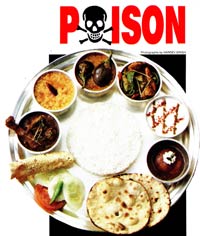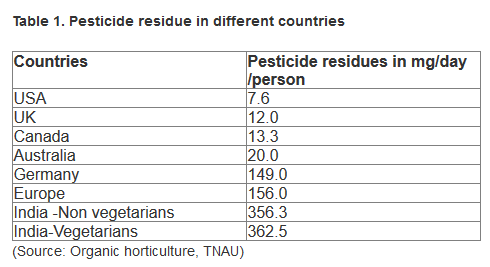
About us
About AASUD.
Word aasud is part of book title “Shetkaryacha Aasud” book by Mahatma Jyotirao Govindrao Phule. So we dedicate this campaign to Mahatma Jyotirao Govindrao Phule.
What is AASUD?
AASUD is campaign to spread awareness and encourage people to buy organic food.
Why AASUD?

Pesticides are the #1 cause of
Birth defects,
Many types of cancers
Short-term impacts,
Endocrine disruption,
Acute dangers and
Chronic health efects and more...
Effect on Soil,Water and Atmosphere.
We asked farmers, why not organic farming? First question they asked us, will you buy? So first step is, we should spread awareness and encourage people to buy organic food.
Unless we assure farmer that, we will buy organic vegetable and fruits, they will not crop them.
I appeal all to be part of AASUD.
Please share with every contacts.
Lets go through some news/articles to know Impact of pesticides and fertilizers used in agriculture.

Chemical concoction: Pesticides in veggies and fruits harm Hyderabad children.

Source: Timesofindia
APPLES: An apple a day no more keeps a doctor away. The most widely consumed and your favourite fruit apple is full of pesticides. More than ninety-five per cent of apples tested positive for a pesticide. And more than 92 per cent of them had two pesticides.
Source: Timesofindia
The 2018 Dirty Dozen Food List
1. Strawberries: Conventional strawberries consistently top the Dirty Dozen list. In 2018, the EWG found that one-third of all strawberry samples contained ten or more pesticide residues.
2. Spinach: 97% of spinach samples contained pesticide residues, including permethrin, a neurotoxic insecticide that is highly toxic to animals (6).
3. Nectarines: The EWG detected residues in nearly 94% of nectarine samples, with one sample containing over 15 different pesticide residues.
4. Apples: The EWG detected pesticide residues in 90% of apple samples. What’s more, 80% of the apples tested contained traces of diphenylamine , a pesticide banned in Europe (7).
5. Grapes: Conventional grapes are a staple on the Dirty Dozen list, with over 96% testing positive for pesticide residues.
6. Peaches: Over 99% of the peaches tested by the EWG contained an average of four pesticide residues.
7. Cherries: The EWG detected an average of five pesticide residues on cherry samples, including a pesticide called iprodione, which is banned in Europe (8).
8. Pears: Over 50% of pears tested by the EWG contained residues from five or more pesticides.
9. Tomatoes: Four pesticide residues were found on the conventionally grown tomato. One sample contained over 15 different pesticide residues.
10. Celery: Pesticide residues were found on over 95% of celery samples. As many as 13 different types of pesticides were detected.
11. Potatoes: Potato samples contained more pesticide residues by weight than any other crop tested. Chlorpropham, an herbicide, made up the bulk of the detected pesticides.
12. Sweet bell peppers: Sweet bell peppers contain fewer pesticide residues compared to other fruits and vegetables. Yet, the EWG cautions that pesticides used on sweet bell peppers “tend to be more toxic to human health.”
Source: Healthline

